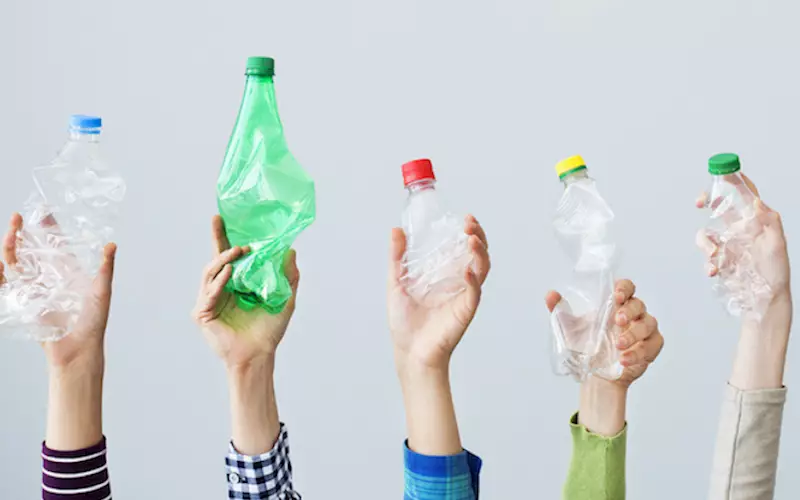PCR resin demand will grow, says Smithers
A recent data from Smithers reveals that demand for post-consumer recycled plastic packaging will grow to 6.37 million tonnes in 2026.
13 May 2022 | By Aultrin Vijay
An exclusive and latest data from Smithers has revealed that the worldwide demand for post-consumer recycled (PCR) resins in packaging reached a total of 4.79 million tonnes in 2021. “Demand has seen only a minor deflection over the two years since the Covid-19 pandemic disrupted plastics end-use applications,” it stated.
According to the report, in 2022, companies are revising their packaging portfolios, responding to new legislative targets, and are already paying premiums for high purity PCR grades. Published in May, Smithers’ brand new business strategy report, The Future of PCR Packaging to 2026, charts how this market will evolve over the next five years. “A compound annual growth rate (CAGR) of 5.9% across 2021-2026 will push global demand to 6.37 million tonnes in 2026,” it mentioned.
Smithers’ analysis tracks the historic, current and future market consumption of PCR across seven polymer types – PET, PE, PP, PS, PVC, EPS, others. The current advanced state of mechanical recycling platforms means that recycled PET (rPET) constitutes the majority (68%) of supply in 2021.
“The arrival of superior recycling technology, combined with impending deadlines for minimum recycled content in PET beverage bottles in Europe, California, and Canada will underpin continued demand,” it stated. It forecasts that the nascent market for low and high-density PE PCR, and PP will expand, as various market barriers are overcome.
“The increased enthusiasm has already seen sourcing move beyond the first generation of post-industrial closed loop recycling platforms,” the report stated. “As the market evolves, it will be dependent on greater investment in collection, sorting, and recovery infrastructure – as well as the implementation of easier to recycle pack designs, and the availability of polymer additives to boost end-of-life processability.”
The data revealed that many brands are keen to embrace PCR as a means to reduce the carbon footprint of packaging. “As technology evolves across the decade, mechanically recycled PCR supply will increasingly compete against other sustainable innovations, including the commercial deployment of chemical (advanced) recycling feedstocks, bioplastics, and reuse packaging formats,” it stated.
Europe is said to be the largest regional market for PCR resins in packaging – accounting for over half of global consumption in 2021 – and will be the fastest growing over the five-year Smithers study period. This is driven by consumer expectations and legislation, including the Single-use Plastics Directive, plastic waste surcharges and support via the EU’s Circular Economy Action Plan.
To meet the rising demand, there is still a need to increase capacity and streamline approval processes for PCR stocks that can be used in direct food contact applications. This is said to slow market availability, and cause further pressure on prices across 2021-2026.
“The same challenges will also constrict PCR availability in other world regions – including North America, which is best positioned to follow Europe,” it cited. “To adequately chart the impact of these factors Smithers' report includes dedicated sections on the current status and the evolution of legislation impacting plastic packaging and PCR materials, with a specific focus on their use in food contact applications.”
Food and beverage formats accounted for over two-thirds of PCR consumption in 2021, and will see the greatest additional demand for PCR in packaging through to 2026. According to the report, multiple FMCG brands have showcased 100% recycled PET beverages bottles as a visible commitment to cutting their impact on the environment.
The market is far from saturated. However, food and beverage packs are said to dominate, as brands work on new projects to achieve corporate sustainability targets set for 2025.











 See All
See All